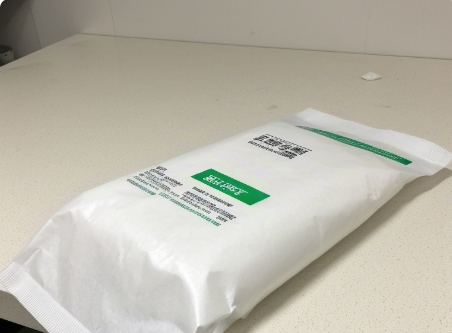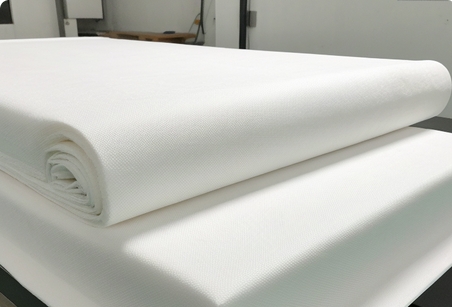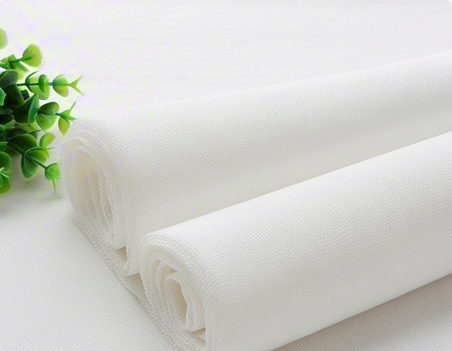Language

Dust-free cloth purchasing guide: How to scientifically screen high-quality manufacturers
In the fields of industrial manufacturing and precision electronics, how to choose a dust-free cloth manufacturer has become a key link in procurement decision-making. The enterprise procurement department should systematically evaluate multiple core elements, ensuring that product performance parameters meet standards, and also considering the supplier's sustainable development capabilities. This article will analyze scientific evaluation methods from three dimensions to help purchasing personnel establish systematic screening standards.
1. Qualification certification: Basic guarantee for enterprise compliance Professional manufacturers must hold a valid business license and special industry business license, and pay special attention to the possibility of separation of production entities and sales entities in group enterprises. It is recommended that suppliers be required to provide qualification documents of the parent company and subsidiary to ensure full-chain compliance. Taking the quality management system as an example, enterprises that have passed ISO 9001:2015 certification have established standardized processes in raw material inspection, process control, finished product inspection and other aspects, and product consistency has increased by more than 30%.
Environmental management system certification (such as ISO 14001) not only reflects the company's environmental awareness, but also directly affects the cleanliness of products. A procurement case of a well-known semiconductor company shows that the particle residues of products of suppliers that have passed environmental certification are 42% lower than those of uncertified manufacturers. It is recommended to focus on checking the clean room grade certificate. The particulate matter on the surface of the dust-free cloth produced in the level 100 clean workshop is usually controlled below 5μm.
2. Production equipment: The physical guarantee of advanced processes. Modern factory buildings must meet both the dual standards of production capacity scale and process accuracy. It is recommended to choose companies with a factory area of more than 5,000 square meters and equipped with a constant temperature and humidity system. The average delivery cycle of such manufacturers is 15-20 working days shorter than that of a small workshop. Focus on core equipment configuration: 1. Ultrasonic edge sealing system (can reduce fiber shedding rate to 0.01%) 2. Fully automatic slitting unit (dimensional tolerance is controlled within ±0.5mm) 3. Multi-layer purification packaging line (ensure product unboxing cleanliness)
The clean workshop grade directly affects product performance. The dust-free cloth produced by ISO 14644-1 standard level 10 clean room (≤10 0.1μm particles per cubic meter) has improved the ESD performance stability by 3 levels compared with the 10,000-level workshop products. According to actual data from a certain LCD panel manufacturer, the residual ion concentration on the surface of the dust-free cloth produced in Class 10 environment can be controlled within 0.1μg/cm² after wiping.
3. Testing system: A testing laboratory with complete technical support for quality control should include four core modules: a physical performance test area (equipped with Hamker rollers and floc testers), a chemical analysis room (configured with ion chromatographs and pH measurement systems), a cleanliness verification area (installed with laser particle counters), and a durability experimental area (configured with cyclotron oscillator and tensile strength meter). It is recommended to focus on checking whether the manufacturer has CNAS certification laboratories. The error range of the detection data of such laboratories can be controlled within ±1.5%.
. Key indicators for quality verification (2) Authoritative inspection and certification verification suggestions require manufacturers to provide test reports that meet IEST or ISO 14644 standards, focusing on checking key indicators such as fiber shedding rate and ion content. For example, a leading electronics company requires
suppliers to pass the ASTM F51 cleanliness test of UL Laboratory to ensure that the product is suitable for Class 10 clean room environments.
It is recommended to use a combination of microscopic observation and practical testing, and the manufacturer can be required to send more than three types of dust-free cloth samples of more than three specifications. The residual amount of particles after wiping is measured by a laser particle counter. The value of high-quality products should be lower than the standard of 100 particles per square foot of 0.5μm particle size.
4. The evaluation of the R&D capability of the technological innovation and service guarantee system needs to focus on the manufacturer's patent holdings and the iteration cycle of new products. For example, a well-known dust-free cloth supplier invests 5% of its revenue every year in R&D and successfully develops ultra-fine denier 0.11dtex fiber weaving technology. The technical support team should have the ability to guide clean room operating procedures on site and be able to provide value-added services such as material compatibility test reports.
5. The market reputation verification mechanism recommends verifying the authenticity of transaction records through a third-party B2B platform, focusing on the renewal rate of cooperative customers for more than three consecutive years. A medical device manufacturer disclosed that its supplier screening criteria include: it must obtain qualified supplier certification from at least three Fortune 500 companies in the world, and the industry association's credit rating is AAA.
6. Comprehensive cost-effectiveness analysis Price assessment requires the introduction of the concept of life cycle cost. It is recommended to create a comparison table containing parameters such as transportation loss rate and rework cost. For example, a semiconductor factory successfully reduced the cost of a single piece by 18% through a batch procurement agreement, while ensuring the IPC ultra-pure standard, and obtained quarterly inventory custody services provided by the manufacturer.
In the field of key components of equipment maintenance, the technical team of high-quality manufacturers should be able to provide preventive maintenance solutions like medical consultants.
Tags:
RELATED RESOURCES

Detailed explanation of dust-free cloth price and edge sealing process: How to choose the right equi
In the field of industrial cleanliness, the pricing mechanism of dust-free cloth as a key consumable involves ......
More

What are the grades of industrial clean cloth?
The industrial dust-free cloth grade classification system is an important technical specification for clean e......
More

How to clean room with industrial dust-free cloth?
Guide to operating specifications for professional clean environment surface cleaningIn controlled environment......
More

Analysis of technical parameters of woven cleanroom cloth: Precision manufacturing advantages behind
In ultra-clean environmental operations such as microelectronics manufacturing, biomedicine and precision opti......
More
Related Products
Room 101, Building 1, Angeer Factory, No.4, Hetian Road, Shatian Community, Kengzi street, Pingshan District, Shenzhen, Guangdong, P.R. China 518122
info@wipestar.com
+86-755-89616775
+86-755-89616773
Related Products
RELATED RESOURCES

Detailed explanation of dust-free cloth price and edge sealing process: How to choose the right equi
In the field of industrial cleanliness, the pricing mechanism of dust-free cloth as a key consumable involves .........
More

What are the grades of industrial clean cloth?
The industrial dust-free cloth grade classification system is an important technical specification for clean e.........
More
WIPESTAR
微信官方公众号